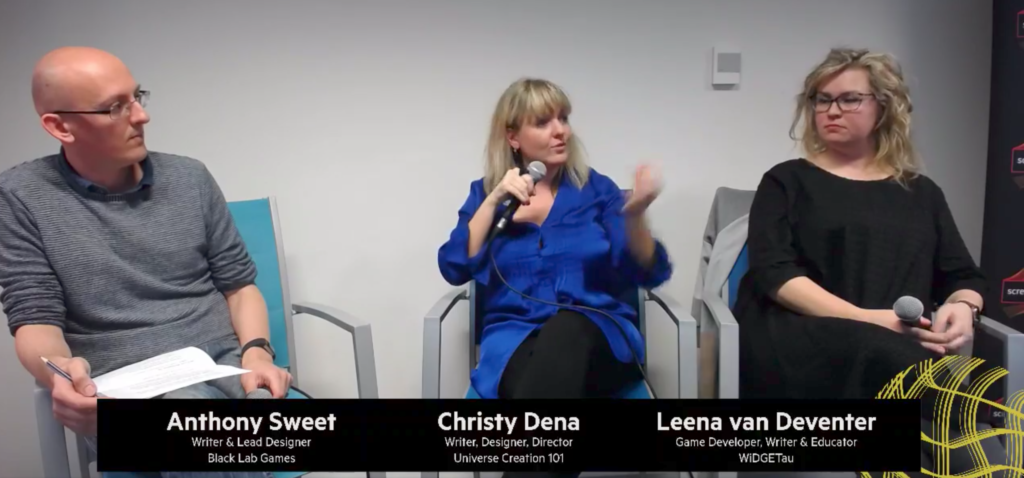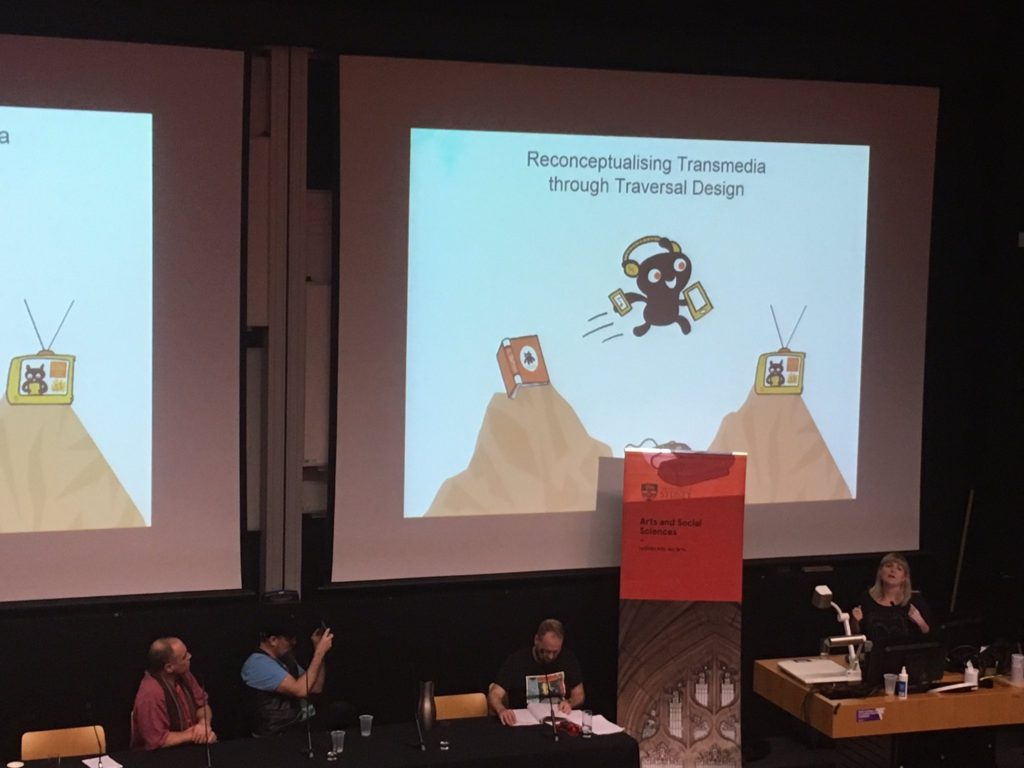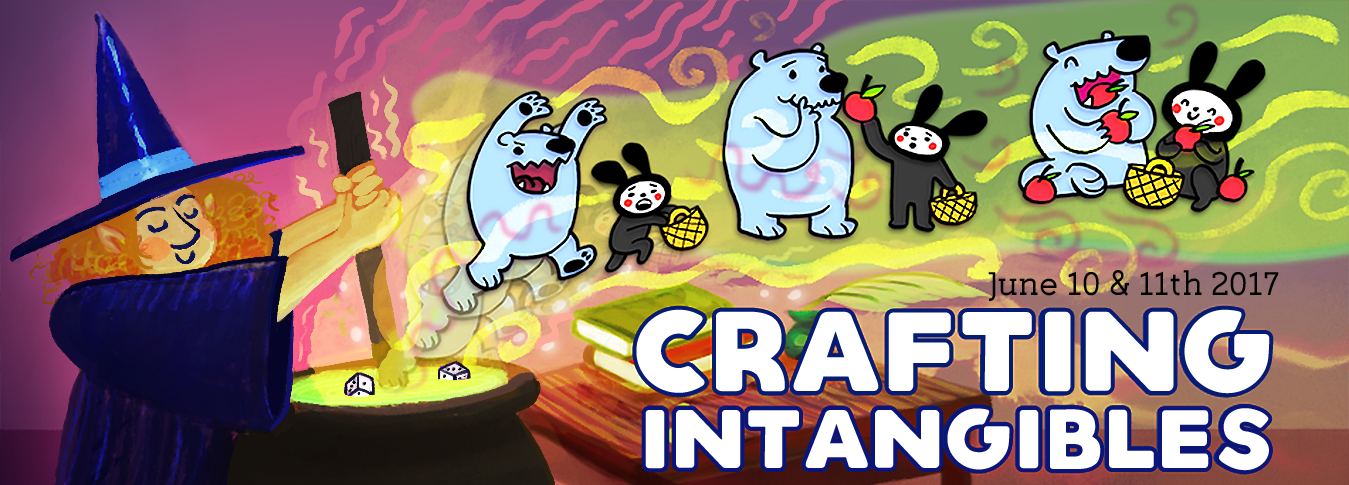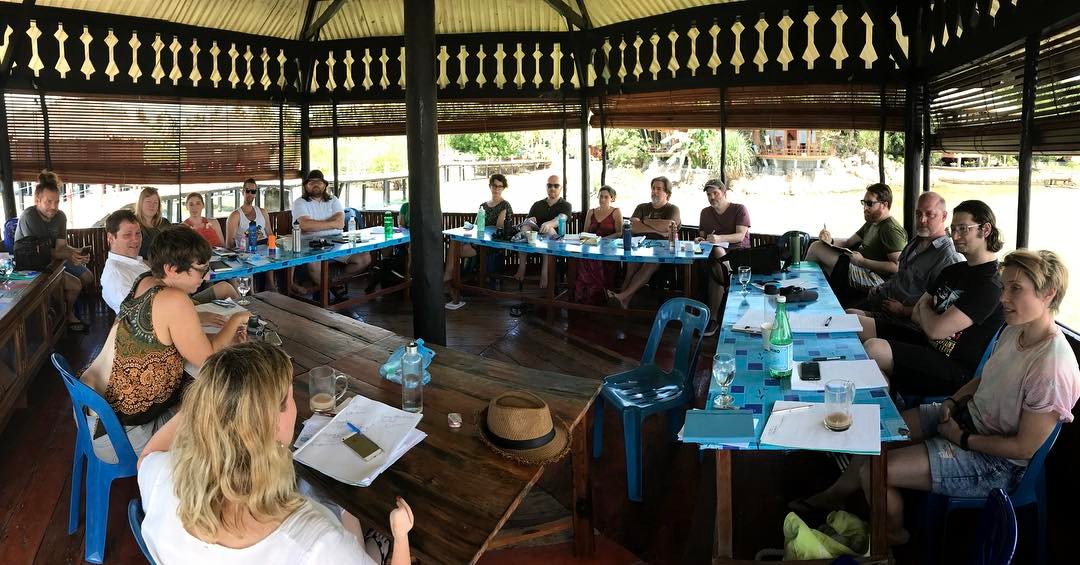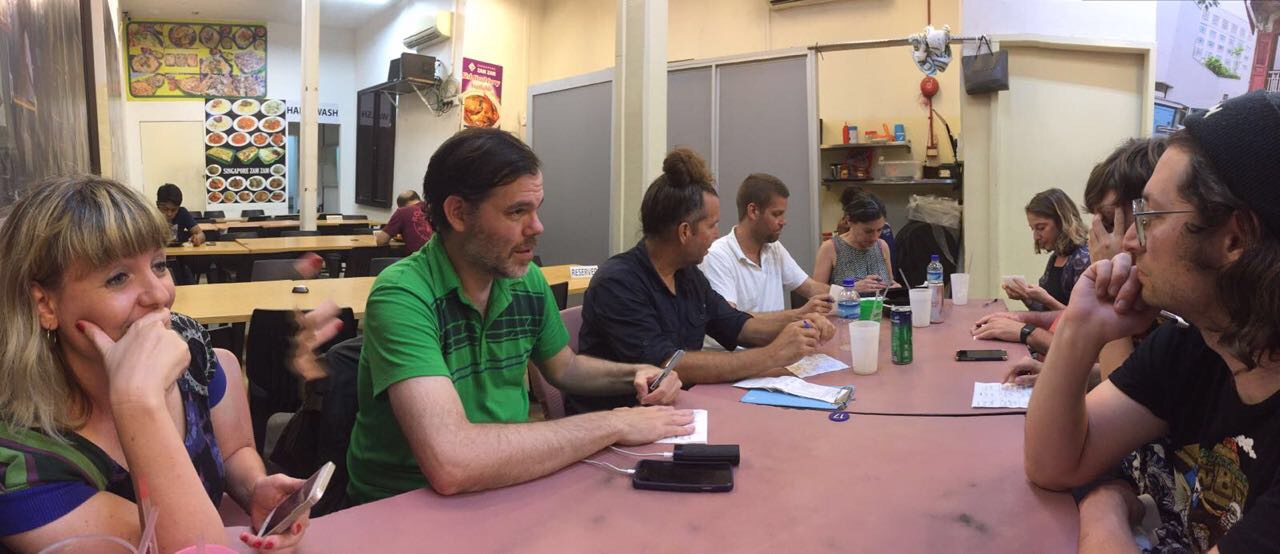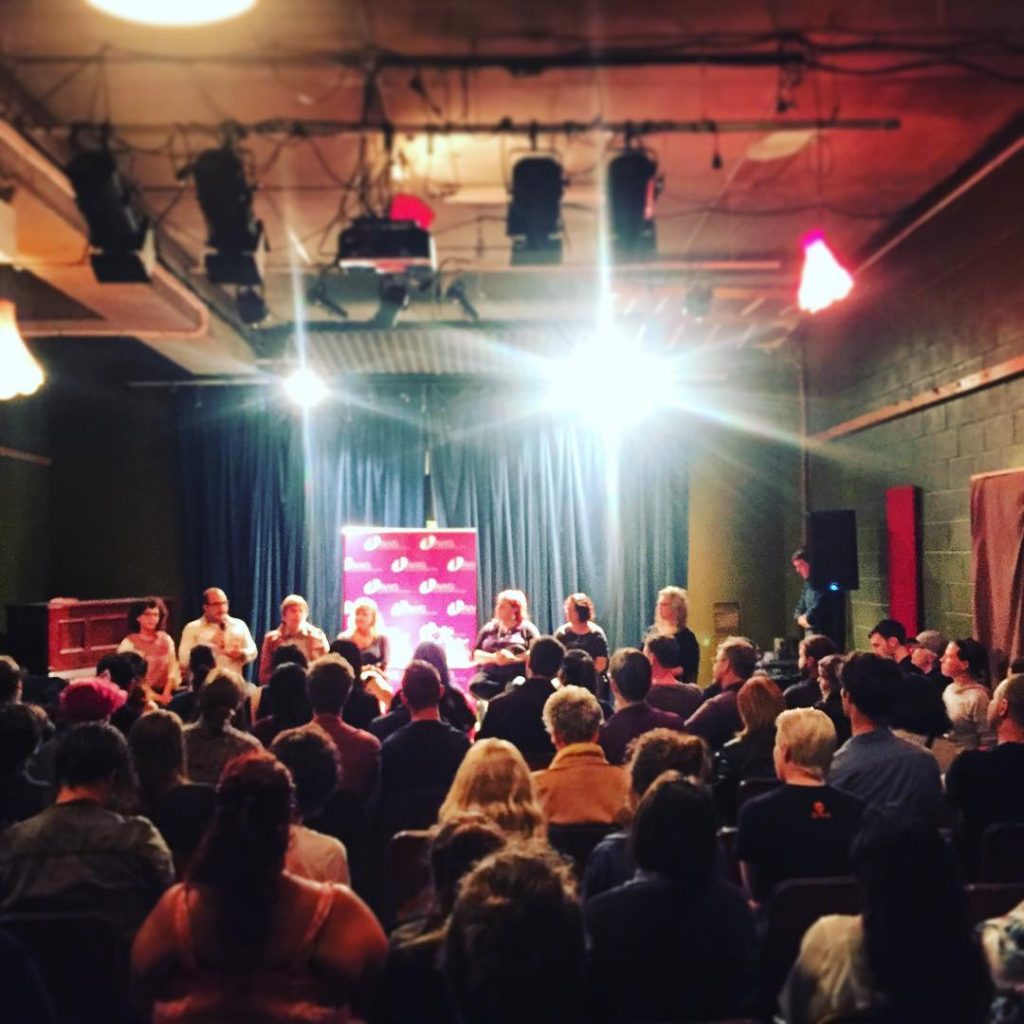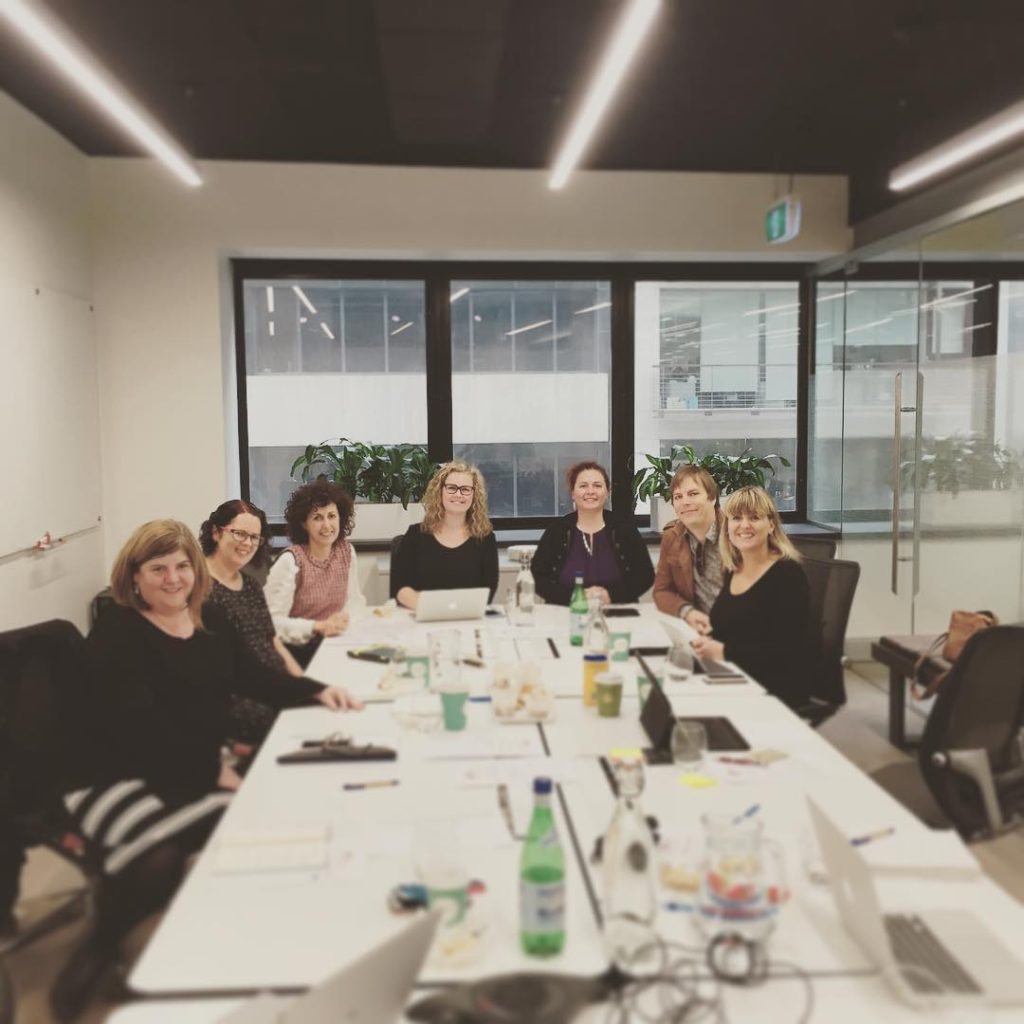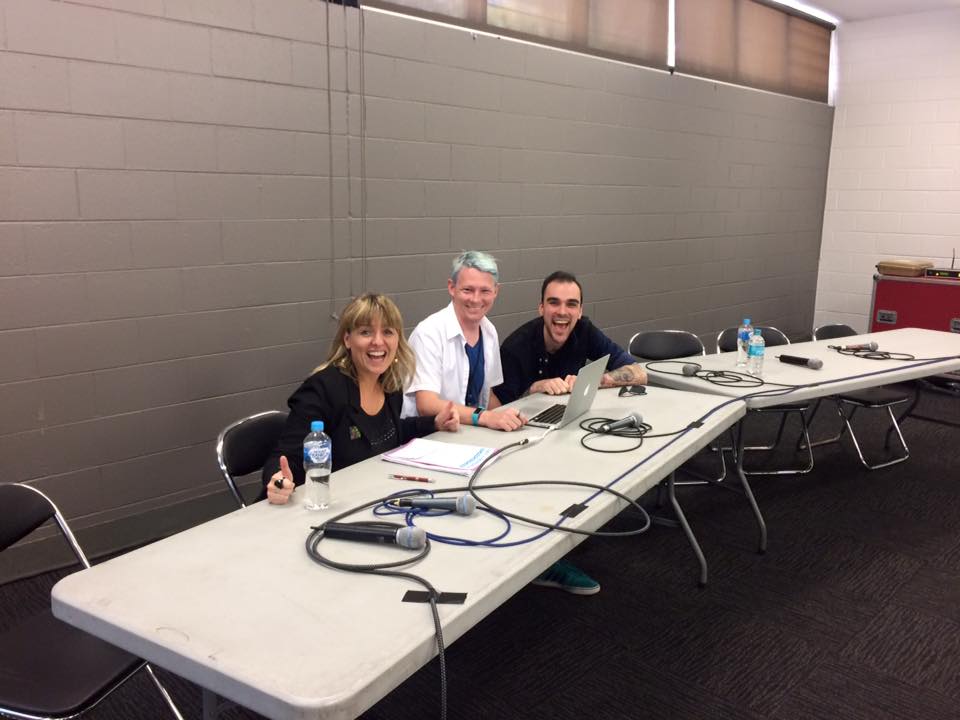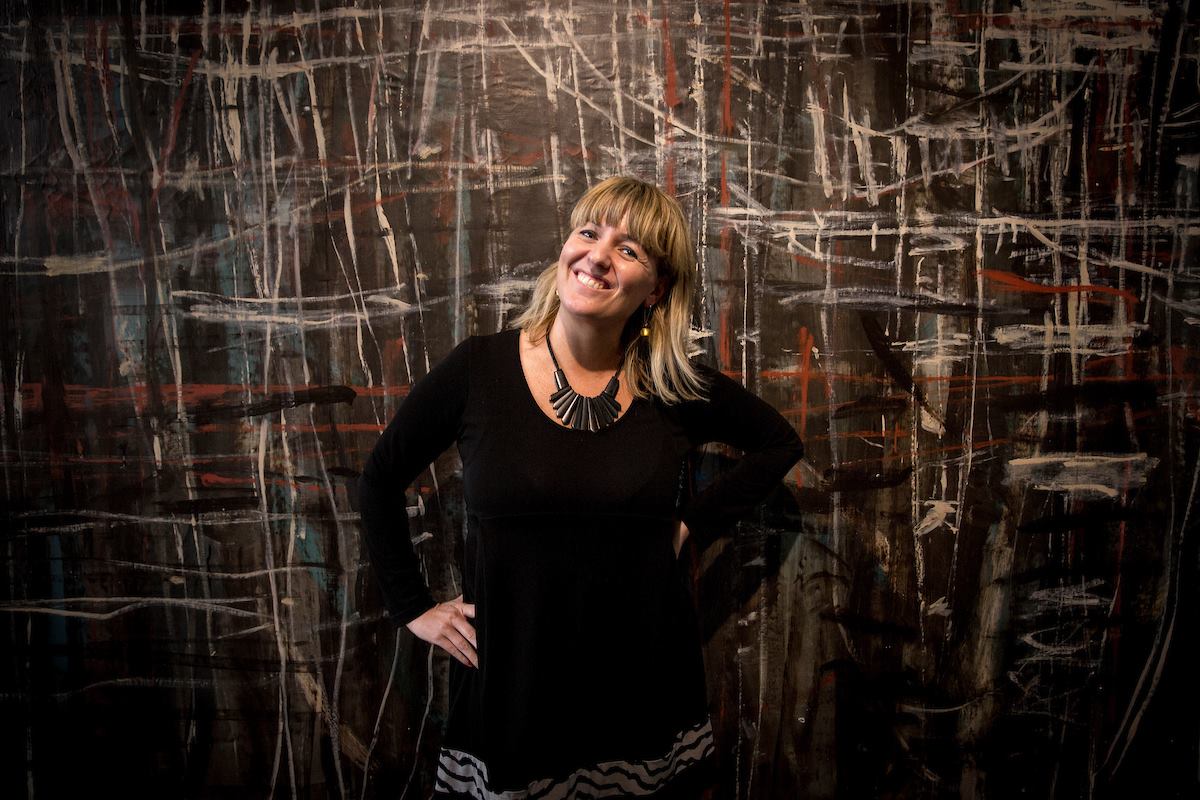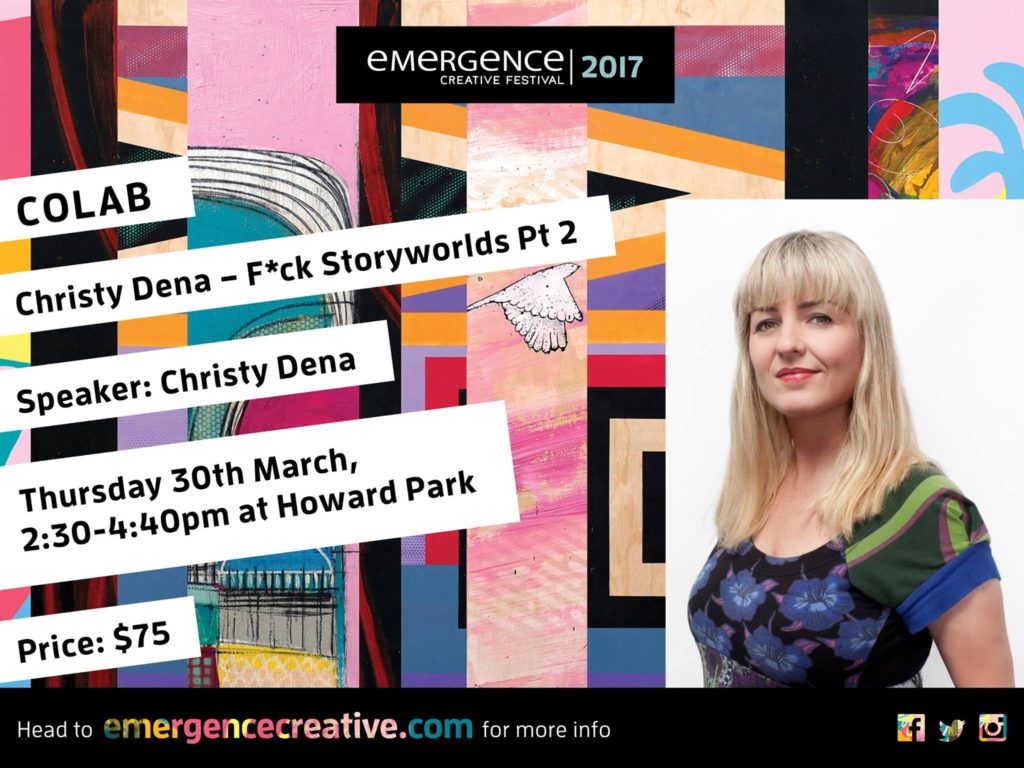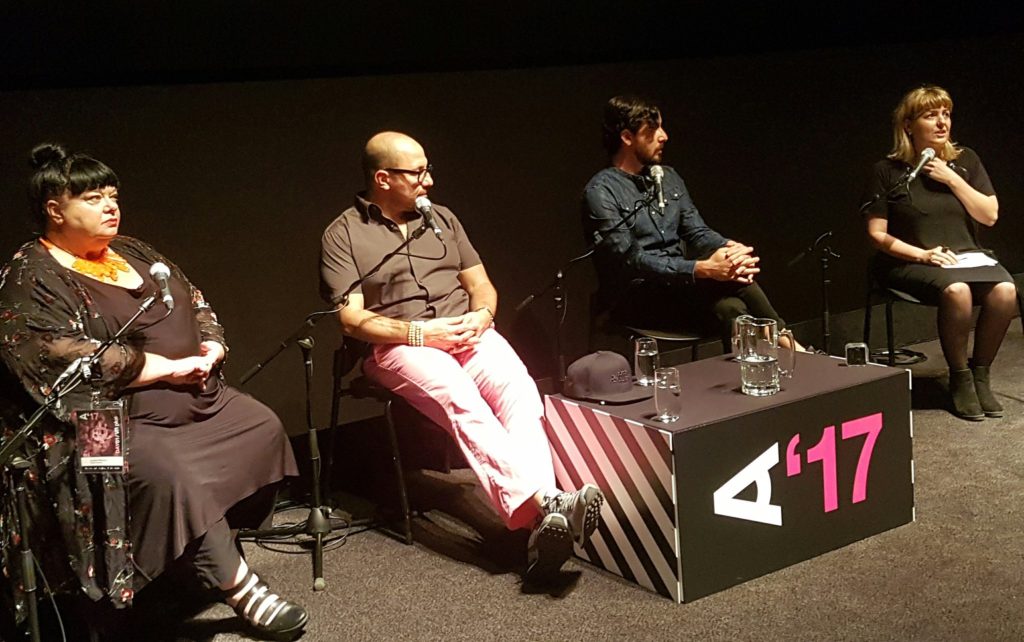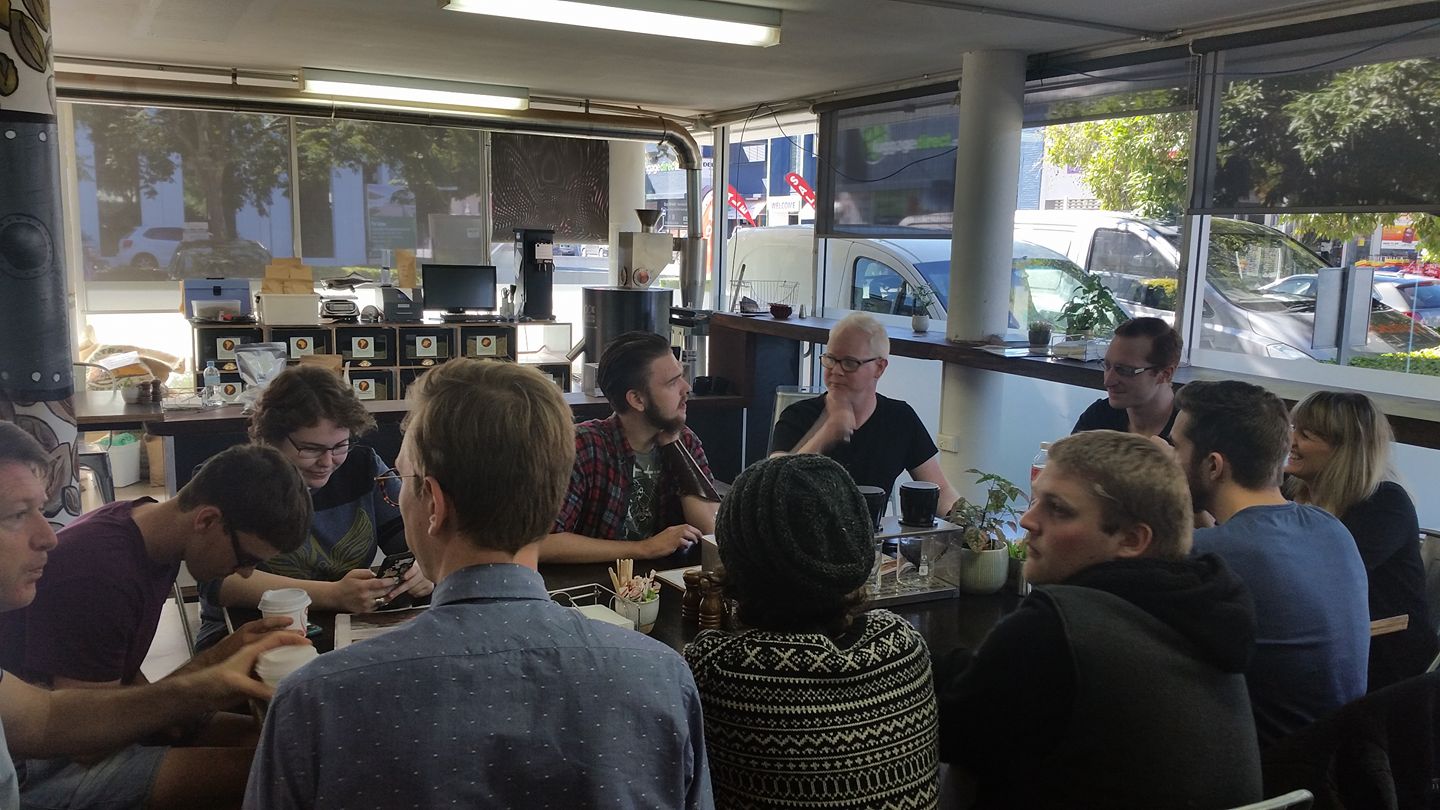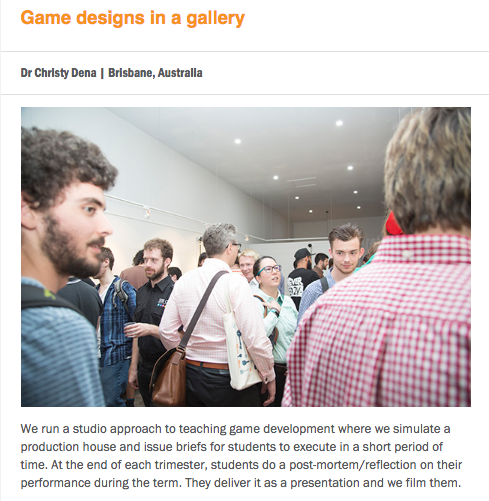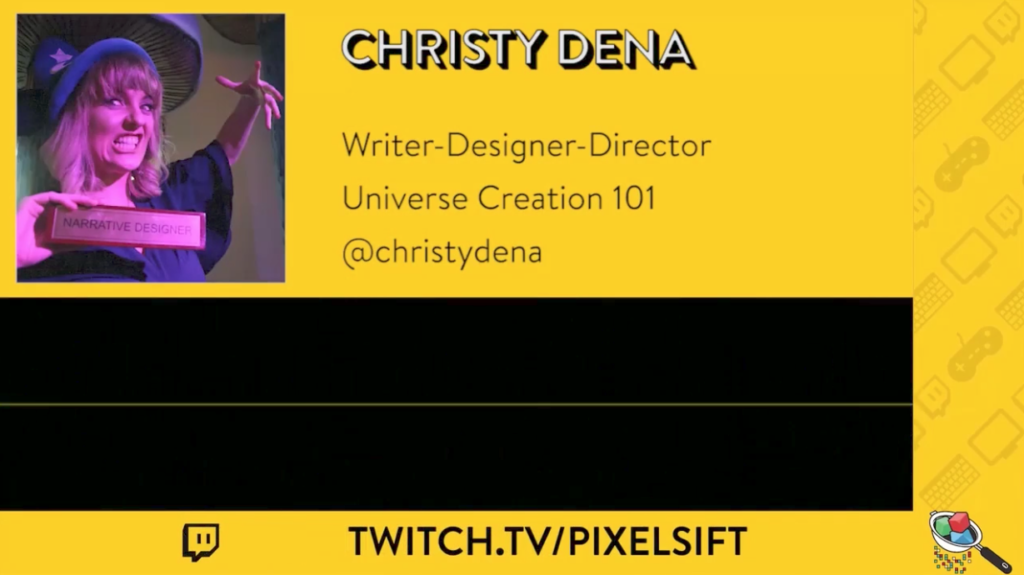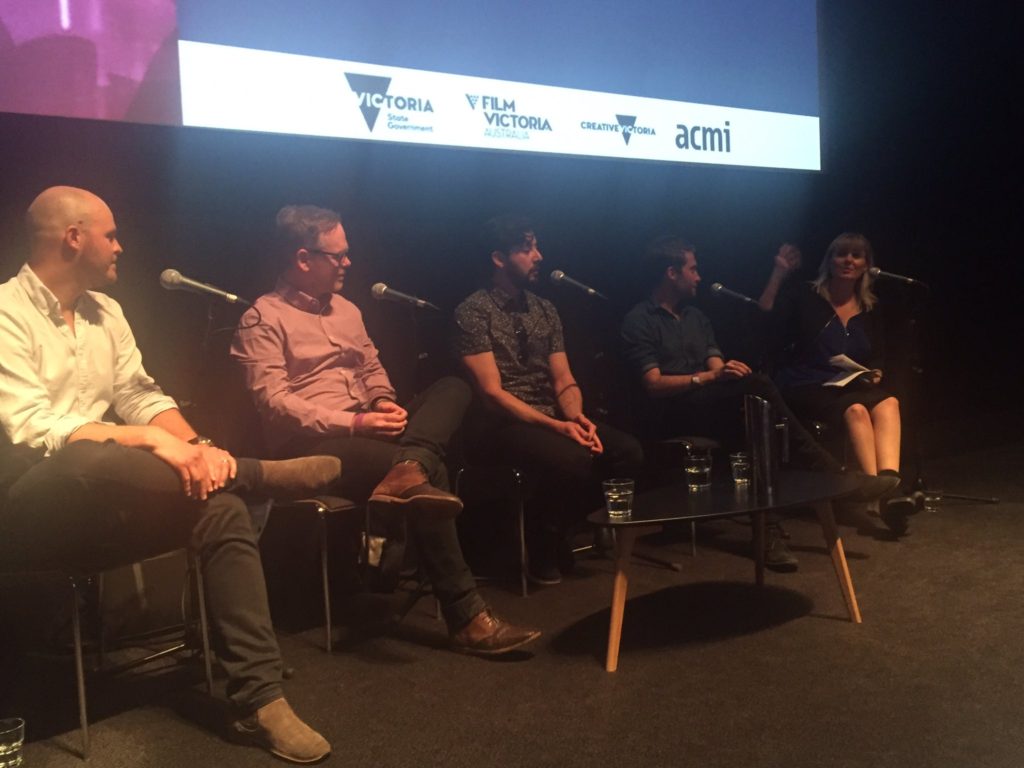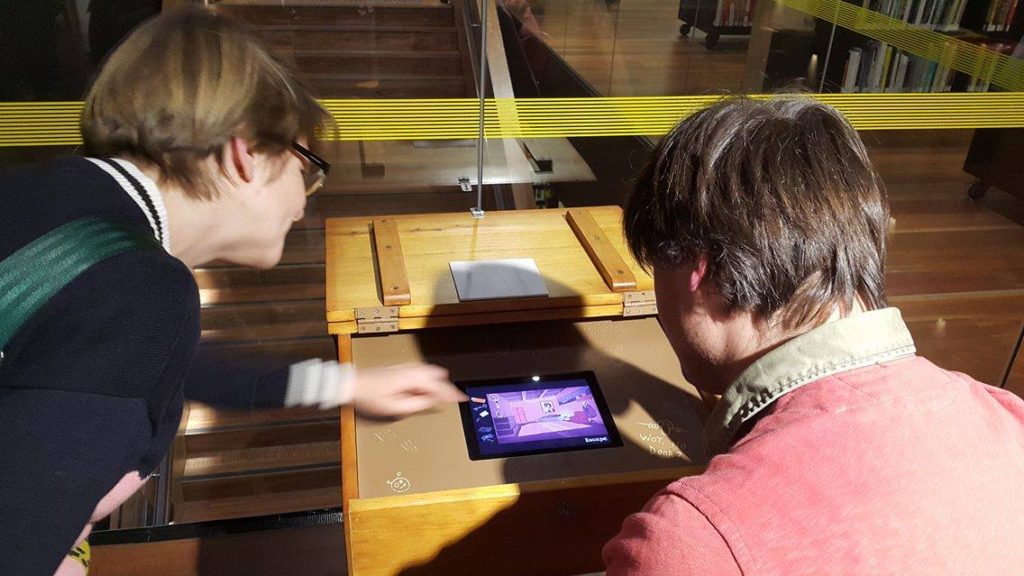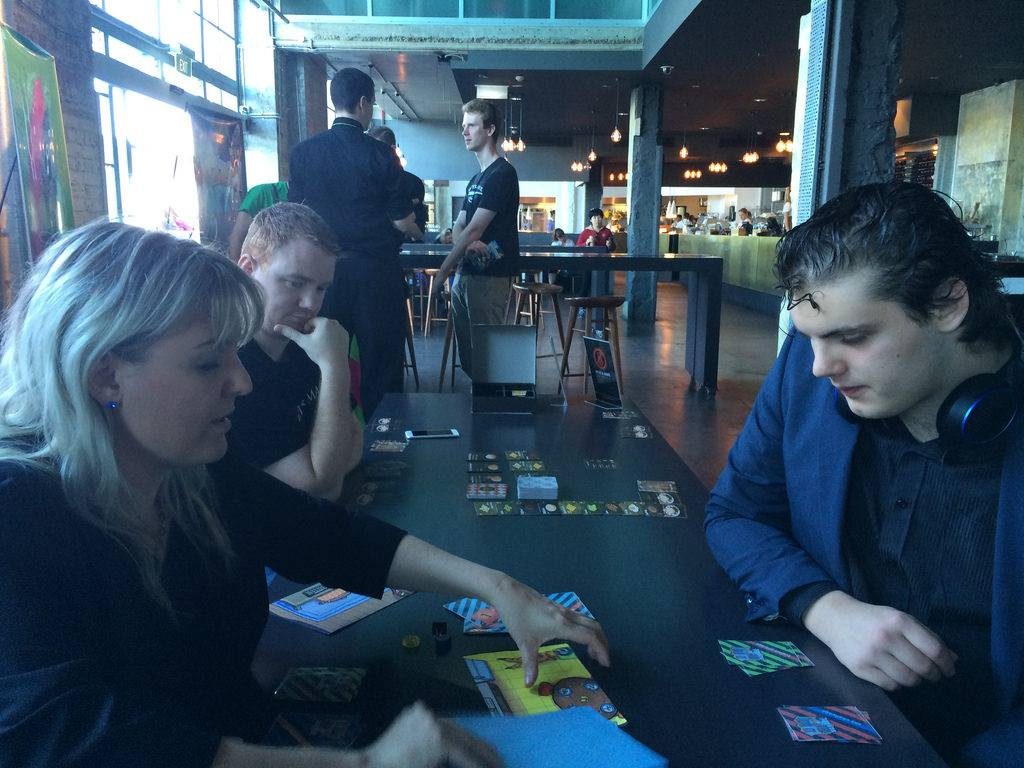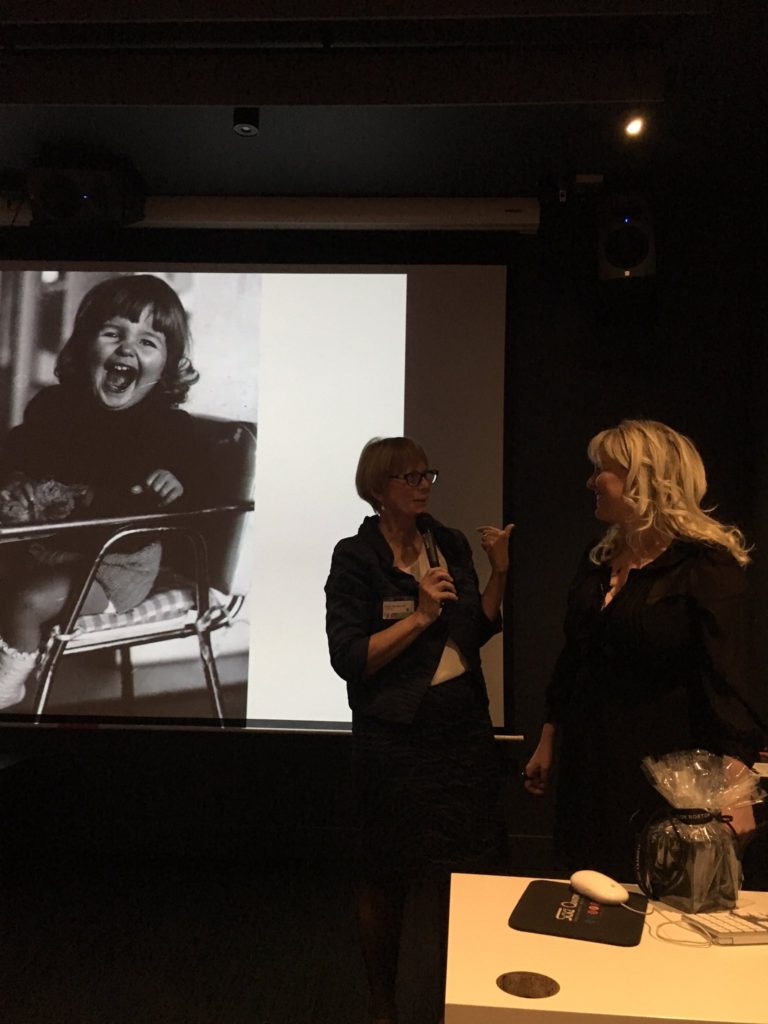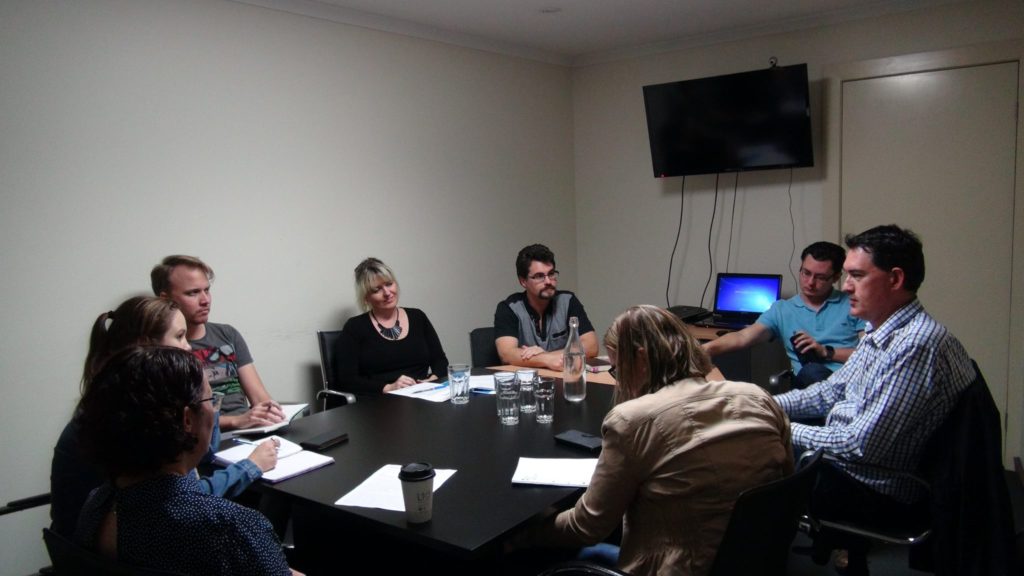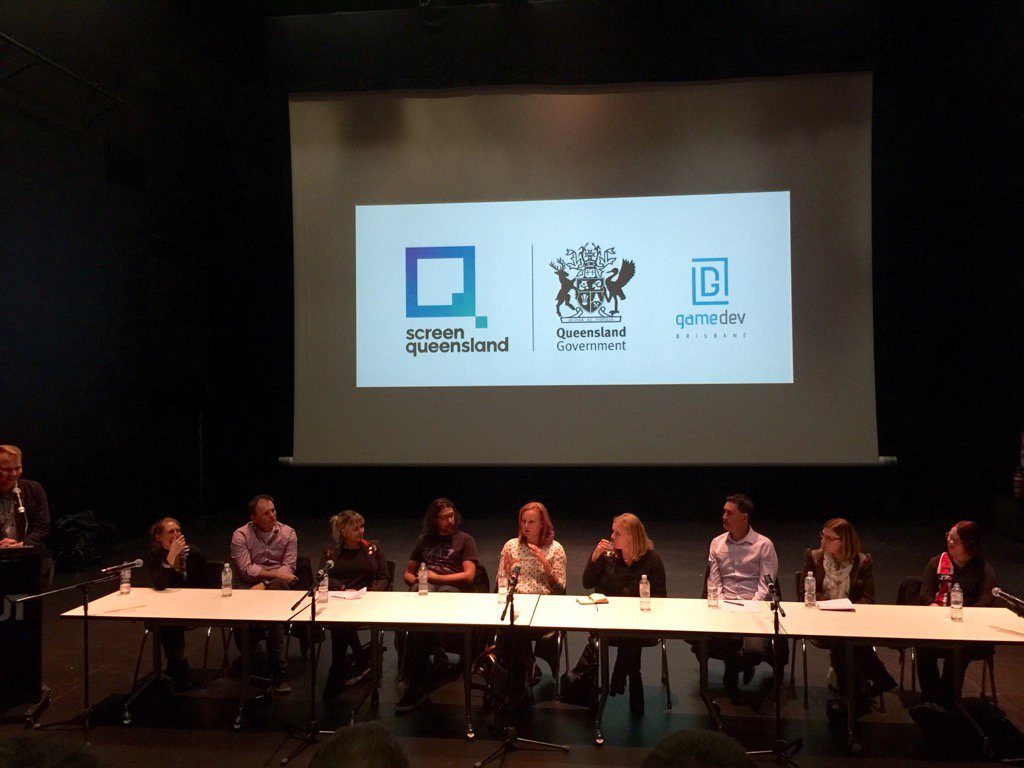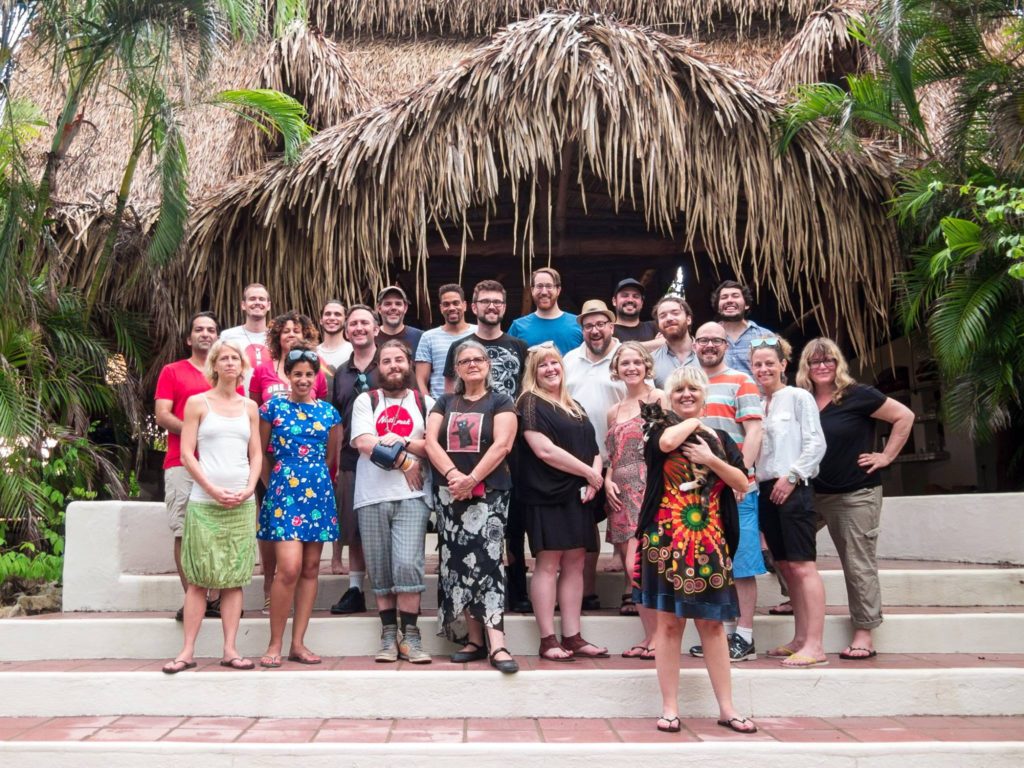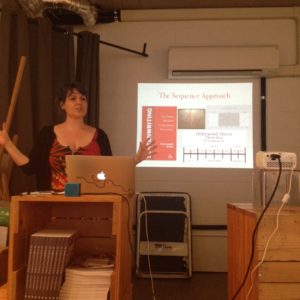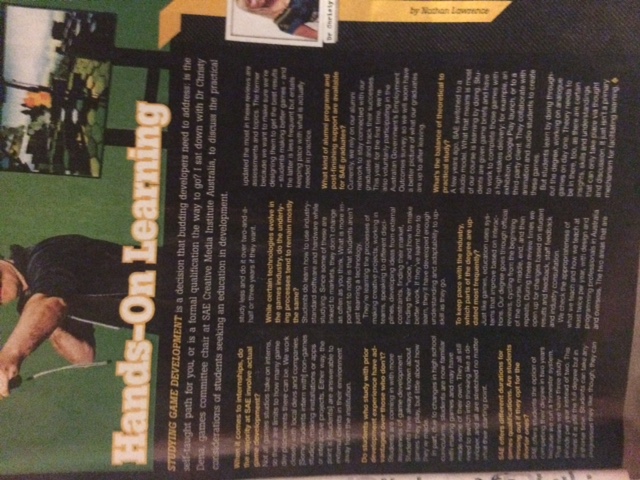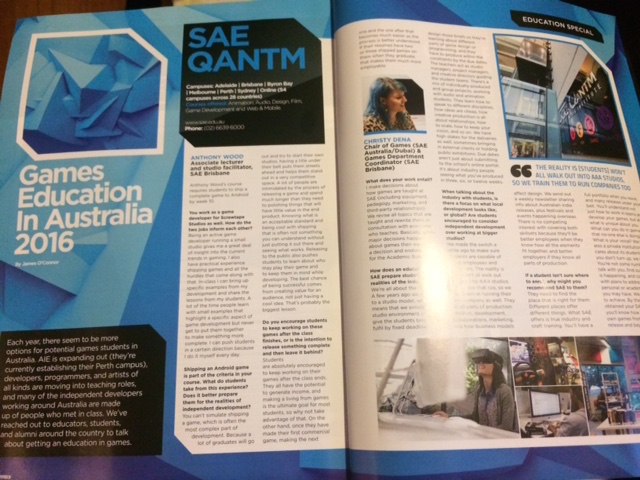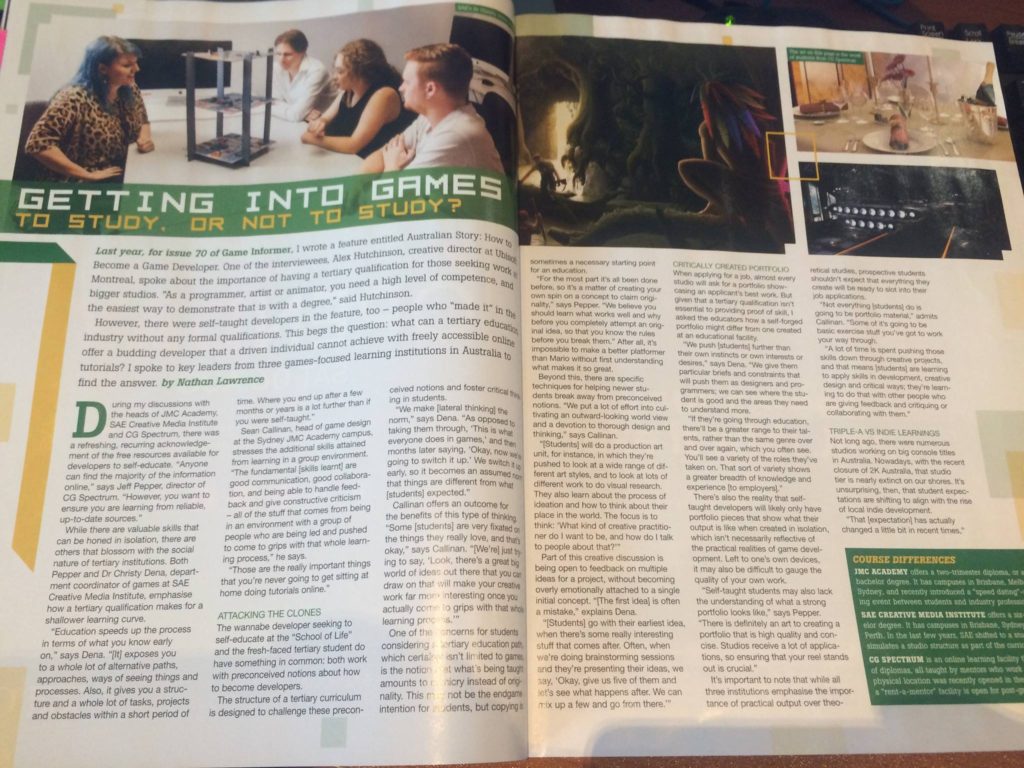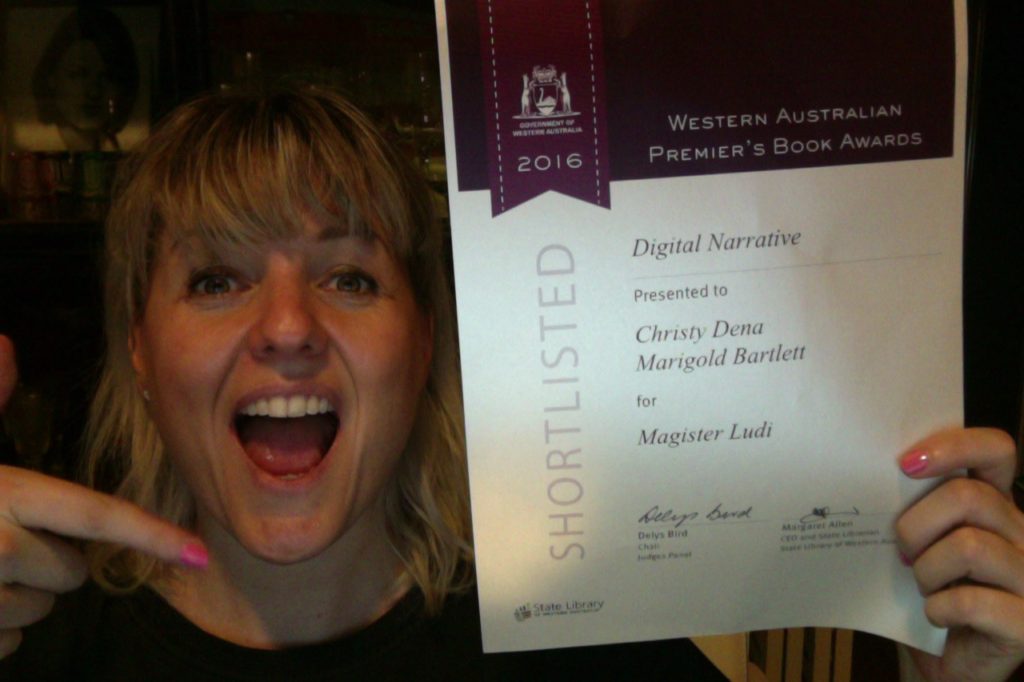(This page will be updated as the year progresses with forthcoming and archived links)
Events
- Panelist, “Navigating Interactive Writing,” Australian Writers’ Guild and Revelations Film Festival, The Creative Hub, Perth, 15th July. Video archive of stream.
- Attending the Digital Games Research Association Australia Conference (DIGRAA), 6th July, 2017.
- Presentation, “Comparing World Recentering Practices in the USA and Australia”, Australian and New Zealand Communication Association Conference (ANZCA), University of Sydney, Weds 4th July, 2017.
- Crafting Intangibles, Organiser: an online international and local event about interactive narrative design, June 10-11th. All videos now released online!
(Event art by Marigold Bartlett)
- Forward Slash Story 2017, Indonesia – the retreat for creatives I co-run with Lance Weiler, May 11th-15th.
[F/S workshop, photo by Topaz Adizes]
[Playtest of a game we made over dinner in Singapore, F/S, photo by Simon Staffans]
- Panelist, “Navigating Interactive Writing,” Write Night, Australian Writer’s Guild, Sydney, May 1st. (see photo below) Podcast of the event available here: Episode 37 on the Australian Screenswriters Podcast.
(Photo of the sold out Write Night panel, AWG, by Olga Nowicka)
- Board meeting, Games & Interactive Committee, Australian Writers’ Guild, Sydney, May 1st. (see photo below)
(Photo of the Games & Interactive Committee at the AWG Headquarters, photo by Olga Nowicka)
- Panelist, “The Challenge of Changing the Minds and Hearts of Players“, with Iain McManus & Aaron Williams, GX Australia, April 29th. (see photo below)
(Christy, Iain and Aaron, pre-panel pic, photo by Jacob Duniam)
- Keynote & Colab Facilitator, “F**k Storyworlds!: A Mischievous Guide of the Latest in Cross Media Design”, Emergence Creative Festival, Margaret River, Western Australia, 29th March-1st Feb. I spoke about my not-yet-published-omg-it-is-coming-book!
(Photo of Christy at Emergence, by Martine Perret)
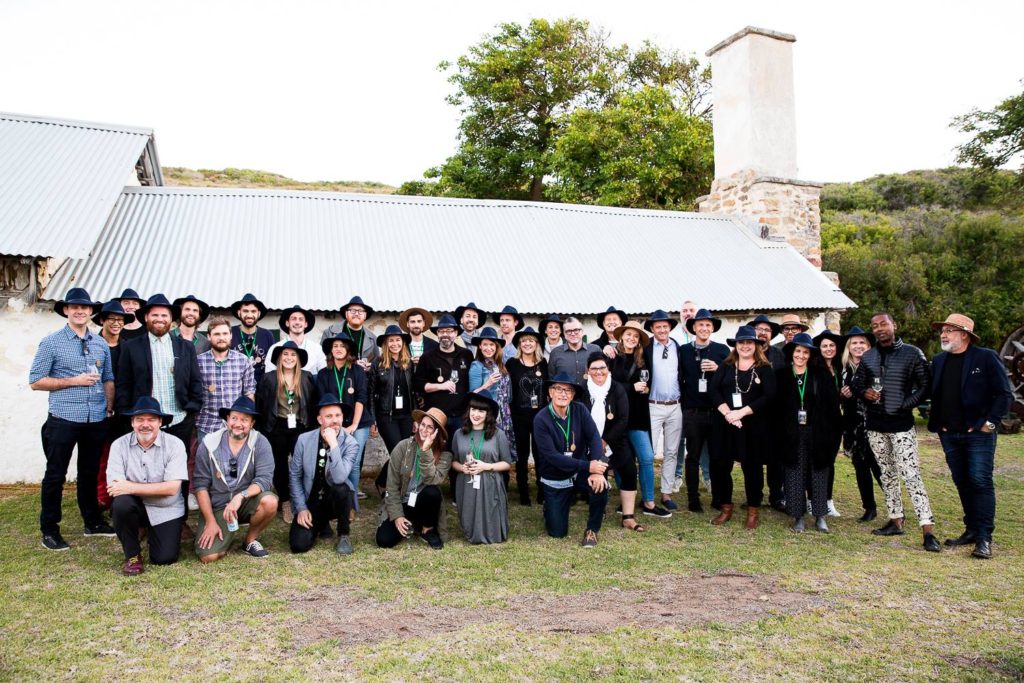 [At the Emergence Creative Festival, Fairfax Dinner]
[At the Emergence Creative Festival, Fairfax Dinner]
- Moderator, “Immersed in the Story“, VR Plus, Australian International Documentary Conference (AIDC), ACMI, Sunday 5th March, 2017. Panelists include Navid Khonsari (iNK Stories), Lynette Wallworth (Collisions) and Oscar Raby (VRTOV). (see photo below)
- Panelist, “Making Games on the Side“, Game Development Brisbane, The Glasshouse, QUT, Sunday 5th Feb, 2017. Panelists include James Bowling, John Passfield, Jason Kristy, and Richard Eastes. Moderated by Lee May. (see photo below)
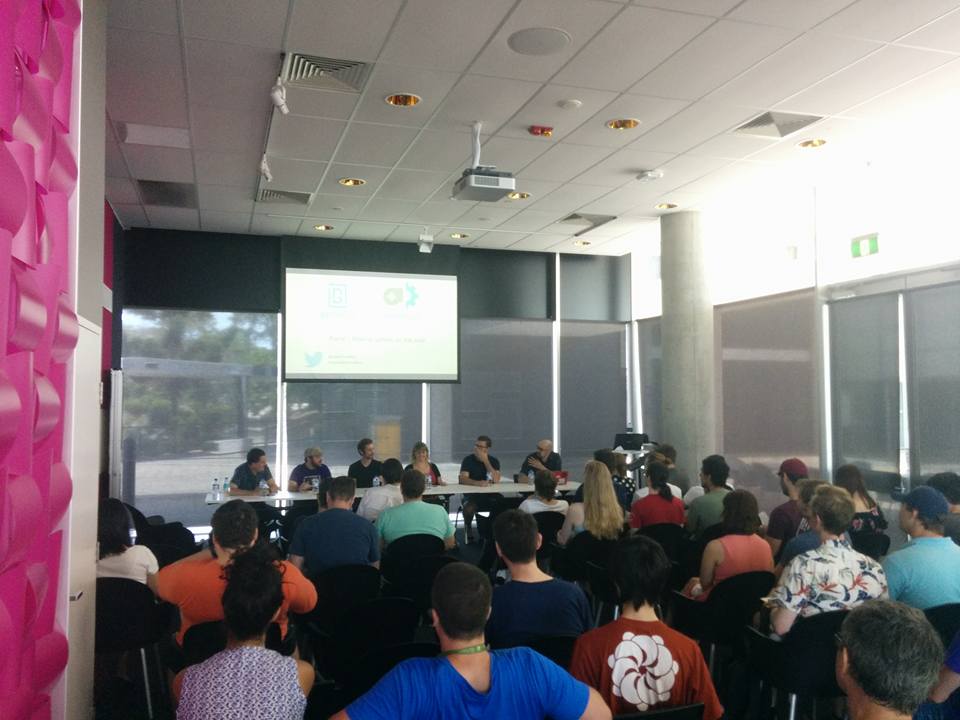 [Making Games on the Side panel, photo by Ashley Davis]
[Making Games on the Side panel, photo by Ashley Davis]
Teaching
- CIM401 Graduate Studio 2, Master of Creative Industries, SAE Creative Media Institute – national online interdisciplinary studio module – written & run by me, 17T3
- Guest Lecture, Transmedia Storytelling, CMN105 Introduction to Film and Television Studies, University of Sunshine Coast, October, 2017, Coordinated by Dr Lisa Hill.
- CIM400 Graduate Studio 1, Master of Creative Industries, SAE Creative Media Institute – national online interdisciplinary studio module – written & run by me, 17T2, 17T3
- 2720GFS Interactive Storytelling, Lecturer & Tutor, Griffith University, 17T2.
- CIU111 Overview of Industry, Tutor, SAE Creative Media Institute, 17T1
- Student Excursion, CIU111 Overview of Industry, visit to local co-working space “GameSpace”, and coffees afterwards with Dan Vogt and Zander Hulme.
(Photo of students at the local cafe with Dan Vogt and Zander Hulme, photo by Joshua Bidwell)
- Guest Lecture, “What I Really Do,” SAE Creative Media Institute, Perth, March 28th.
- Facilitator, “Summer Series – Game Development,” SAE Creative Media Institute, Brisbane, Jan 13th-15th. I designed and ran the design side, and Dr Iain McManus did the scripting side. The teenagers created a hybrid digital-board game in 3 days. I took them through player interviewing, play research, speed ideation sessions, and prototyping.
Publications
- Dena, C. (forthcoming) Transmedia and Adaptation: Revising the No-Adaptation Argument, The Routledge Companion to Transmedia Studies, Ed. by Renira Rampazzo Gambarato and Matthew Freeman.
- Co-Editor (with Brendan Keogh), Special Issue: DiGRA Australia 2017 Queensland Symposium, Transactions of the Digital Games Research Association (ToDiGRA), Vol. 3, No. 1.
- Dena, C. (2017), Finding a Way: Techniques to Avoid Schema Tension in Narrative Design, Transactions of the Digital Games Research Association (ToDiGRA), Vol. 3, No. 1.
- Dena, C. (2017) “Why Craft Intangibles?“, Crafting Intangibles, Medium.com, April 25th.
- “A Narrative Designer’s Experience of Amazon’s The Man In the High Castle Resistance Radio Campaign,” Medium, 11th March.
- Contributor in Murdoch-Kitt, K.M. (2017) ‘Before the end is near: finals week ideas‘, AIGA Design Educators Community, 20th Feb.
- Curator, Contributor (2017) Forward Slash Story Alumni Remote Show #2, 31st Jan. This is a regular publication by alumni who participated in the residential lab I co-run with Lance Weiler. The illustration (below) is by my regular artist Marigold Bartlett.
- Contributor (2017) One Year in Now Media Vol IV, Simon Staffans, 3rd Jan, 2017. Other contributors include Mike Monello, Jeff Gomez,Asta Wellejus, Angela Natividad, Lee-Sean Huang, Maya Zuckerman, Andrea Phillips and Steve Peters.
Peer Reviews, Publisher Assessments, Funding Assessments
- Austrian Science Fund
- Bloomsbury Publishing
- DiGRAA
- International Journal of Transmedia Literacy
- Macquarie University (Masters assessment)
Peer Award Judging
- Australian Writers’ Guild, ‘Interactive Writing’ AWGIES, 2017.
Press/Interviews
- Interviewee (2017) “Creative Practice and the Law”, Intellectual Property and Innovation Law Research Group, Law School, QUT. 18th Jan. Principal Researcher: Dr Kylie Pappalardo
- Interviewee (2017) “Episode 77: Interview with Christy Dena,” Pixel Sift, Twitch
Professional Development
- EdTech Pre-Accelerator, EduGrowth, Sept-Oct, 2017. 6 weeks.
- Weekend Comedy Course, Fiona McGary, The Sit Down Comedy Club Brisbane, 16-17 Sept, 2017.
- Foundations of Learning and Teaching Online: Essential Concepts, Certificate, Navitas, July-Aug, 2017. 5 weeks.
